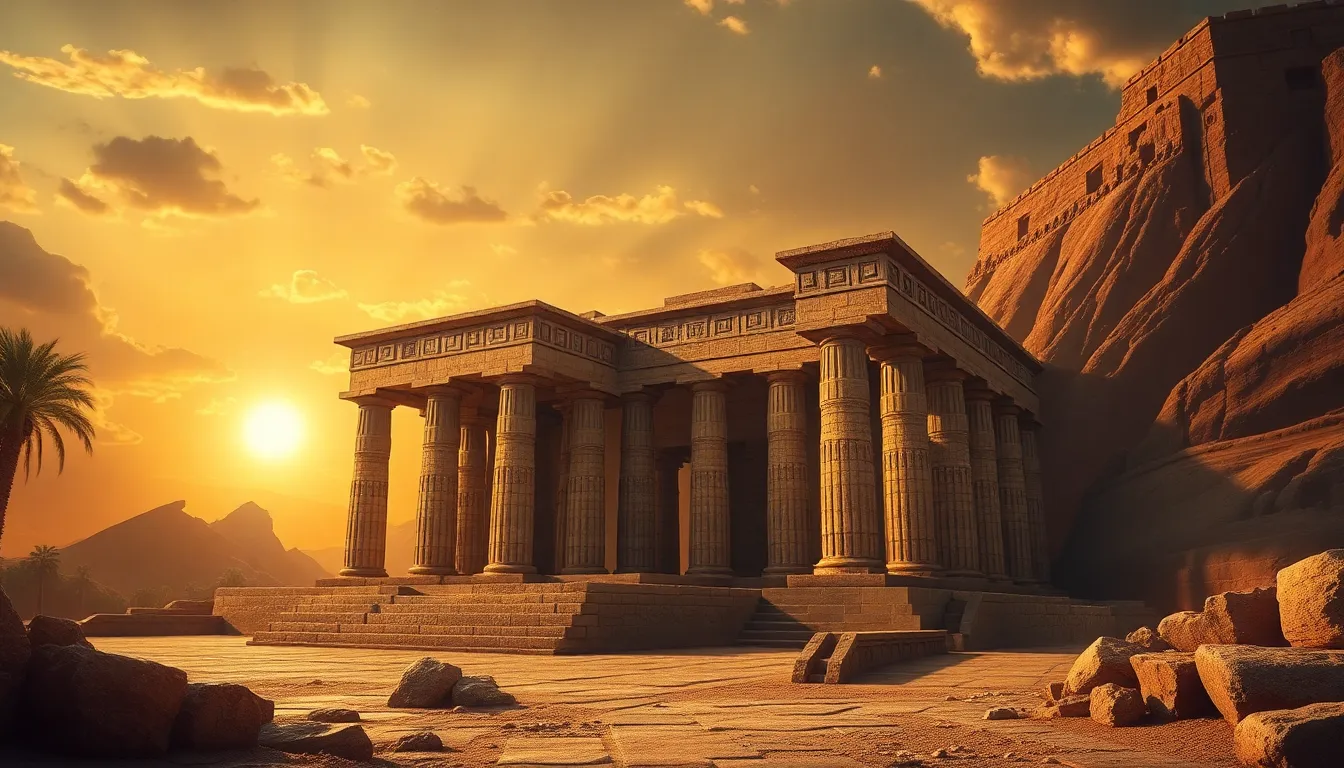The Temple of Isis: A Pilgrimage to the Divine
I. Introduction
The Temple of Isis, located on Philae Island in the Nile River, stands as a magnificent testament to ancient Egyptian architecture and spirituality. Dedicated to the goddess Isis, this temple is not only an architectural marvel but also a significant site in ancient Egyptian religion, drawing pilgrims from various regions.
The significance of the Temple of Isis extends beyond its physical structure; it embodies a rich tapestry of mythology, worship, and community. This article aims to explore the pilgrimage experience to the Temple of Isis, shedding light on its historical, cultural, and spiritual dimensions.
II. Historical Background of the Temple of Isis
The origins of the Temple of Isis can be traced back to the Ptolemaic period, around the 3rd century BCE. Initially built under Ptolemy II, the temple underwent various modifications and expansions over the centuries. Its construction showcased the religious devotion of the Ptolemaic dynasty and their desire to connect with ancient Egyptian traditions.
Key historical figures associated with the temple include:
- Ptolemy II Philadelphus – The founder of the temple.
- Ptolemy IV Philopator – Known for significant renovations.
- Augustus – The Roman emperor who further enhanced the temple during the Roman period.
The Temple of Isis evolved through various dynasties, adapting to shifting religious practices and cultural influences, ultimately becoming a focal point for the worship of Isis, the goddess of motherhood, magic, and fertility.
III. The Mythology of Isis
Isis, one of the most revered deities in ancient Egypt, is known as the goddess of magic, healing, and motherhood. She played a crucial role in the Osiris myth, where she resurrected her husband Osiris and protected their son Horus. This story symbolizes themes of death, rebirth, and the eternal cycle of life.
Key myths associated with Isis include:
- The Resurrection of Osiris – In which Isis collects the pieces of Osiris’ body and brings him back to life.
- The Protection of Horus – As a mother, Isis safeguards her son from the wrath of Set, the god of chaos.
- The Mysteries of Isis – A series of rituals and ceremonies that celebrated her divine power and connection to the afterlife.
Isis’ worship was integral to ancient Egyptian spirituality, symbolizing the nurturing aspect of the divine and the importance of family and community.
IV. The Architecture of the Temple
The Temple of Isis is renowned for its intricate architecture and stunning design. The temple complex features a series of courts, sanctuaries, and pylons, all adorned with elaborate carvings and hieroglyphs that depict the stories of Isis and other deities.
Key architectural features include:
- The Hypostyle Hall – A grand hall supported by majestic columns, decorated with reliefs of the goddess.
- The Inner Sanctum – The most sacred area, housing the cult statue of Isis.
- The Sacred Lake – Representing the primordial waters from which life emerged, it served as a place for purification rituals.
Symbolic elements are prevalent throughout the temple’s design, reflecting the ancient Egyptians’ beliefs in the afterlife, resurrection, and the power of the divine. Comparisons can be drawn with other ancient temples dedicated to deities, such as the Temple of Karnak, yet the Temple of Isis retains its unique character and significance.
V. The Pilgrimage Experience
Throughout history, the Temple of Isis attracted numerous pilgrims seeking healing, divine favor, and spiritual connection. Historical accounts document the journeys of devotees who traveled great distances to pay homage to the goddess.
Rituals and practices performed by pilgrims included:
- Offering prayers and sacrifices to the goddess.
- Participating in sacred festivals, such as the Mysteries of Isis.
- Seeking healing through the goddess’s reputed powers.
Personal testimonies from ancient texts reveal the profound impact of these pilgrimages. Devotees often reported experiencing miraculous healings or visions, reinforcing their faith and commitment to the goddess.
VI. The Role of the Temple in Modern Spirituality
Today, the Temple of Isis continues to inspire contemporary spiritual practices. With a resurgence of interest in ancient Egyptian spirituality, many people seek to connect with the wisdom and teachings of the past.
Modern spiritual practices draw from ancient traditions in various ways, including:
- Rituals honoring Isis as a symbol of feminine strength and resilience.
- Workshops and seminars exploring ancient wisdom and mythology.
- Pilgrimages to the temple and other sacred sites in Egypt.
Sites of pilgrimage today, such as the Temple of Isis, hold significant meaning for many spiritual seekers, serving as places of reflection, healing, and connection to the divine.
VII. Preservation and Archaeological Efforts
The current state of the Temple of Isis reflects both the beauty of ancient craftsmanship and the challenges of preservation. Efforts to maintain the site have been ongoing since its discovery, with various organizations and governments working to protect this cultural heritage.
Ongoing archaeological research continues to yield discoveries that deepen our understanding of the temple’s history and significance. These efforts are crucial in preserving the temple for future generations, as they provide insights into ancient Egyptian religion, society, and art.
VIII. Conclusion
In reflection, the Temple of Isis remains an enduring symbol of ancient Egyptian spirituality and culture. Its rich history, intricate architecture, and the mythology surrounding the goddess Isis highlight the temple’s significance in the ancient world.
The impact of the Temple of Isis continues to resonate today, influencing modern spirituality and practices. As a site of pilgrimage, it serves as a reminder of the human quest for the divine, the importance of community, and the enduring legacy of our ancestors.
Ultimately, the journey to the Temple of Isis is not just a pilgrimage to a physical location, but a pilgrimage to the divine, inviting each visitor to connect with the sacred and explore the depths of their spirituality.




